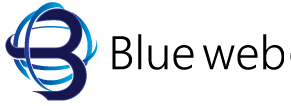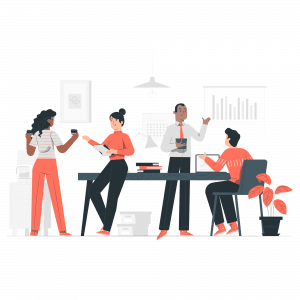There is no one way to design a landing page. Above all, what matters is that your landing page effectively informs and persuades visitors. So, over the years, landing page design has created patterns that users have become accustomed to, and these can act as a foundation upon which to build.
Below is an analysis of the most common landing page site design.
Header
The header is the first part of a landing page. A rectangular space that usually takes up most of the first page. Although it may come in different sizes, the following items are usually included:
- Branding: Company logo and product logo (if applicable)
- Hero image: The most prominent and attractive image related to the product, usually in the form of a banner ad. This banner can be an image of the product itself or a design or photo that shows the experience of using the product.
- Headline: The text content that accompanies the hero image that makes for a great banner ad.
- Sub-headline: Names the product and provides a more detailed summary of its benefits. (This is called the value proposition)
- A call to action (CTA): Also known as a CTA, it is an option (within text content, such as “Buy Now!”) that users click on to be directed to the purchase process. The CTA is an important part, but be careful not to overdo it, as it can clutter the page and make it difficult to make a sale. Instead, try creating a fixed toolbar on the page that keeps the CTA at the top of the page as users scroll up and down. (Note: CTA can also have other functions, such as attracting followers or downloading, but for the sake of simplicity, we will refer to the purchase in this article.)
- One of the Website Design is the header, which should be small in size, and is the navigation menu for the site. Although most websites have a main menu, the landing page is not a “normal” virtual page. The goal of the landing page is to keep visitors on the page until they are ready to buy, but a main menu with too many options encourages them to go elsewhere.

- Content: The content section forms the main part of the landing page. The header’s job is to introduce the product and grab the user’s attention, and the content should detail the value of the purchase and make a compelling argument for converting users from non-customers to customers. Landing page content should include the following:
- Supporting graphics: Secondary images of the product (from other angles or of customers using the product), icons used to simplify the table of contents bullets, or abstract colors or shapes that can guide the visitor’s eyes along the page.
- Product details: Text content that clearly and step-by-step explains how the product works. If links are used in each of these steps that further explain the steps (such as “Click here for more information”), they can be helpful in clearing up confusion. But again, we emphasize that you should be careful not to drive users away from the landing page.
- Quality Comparison: This is about how the product can improve the lives of customers, sometimes by comparing the product with competitors’ products or by identifying and solving customer problems.
- Buyer Credibility: Previous buyer ratings, reviews, or testimonials, all of which build buyer confidence in the product through positive opinions.
Footer
The footer comes at the bottom of your landing page and is where visitors should make their final decision. A footnote usually includes the following:
- Links to other pages: You may want to link to other related pages on your website. For example, your FAQ page.
- Social media links: This may be controversial (as mentioned earlier, you shouldn’t encourage users to take actions that don’t have a CTA), but it can boost site traffic and provide links for users to share the landing page with their followers.
- Contact information: A phone number or email address gives customers a place to contact you if they have further questions.
Legal information: Website and product copyright, along with other legal issues. This section is usually placed in a dark bar at the bottom of each page to separate it from the rest of the content.



